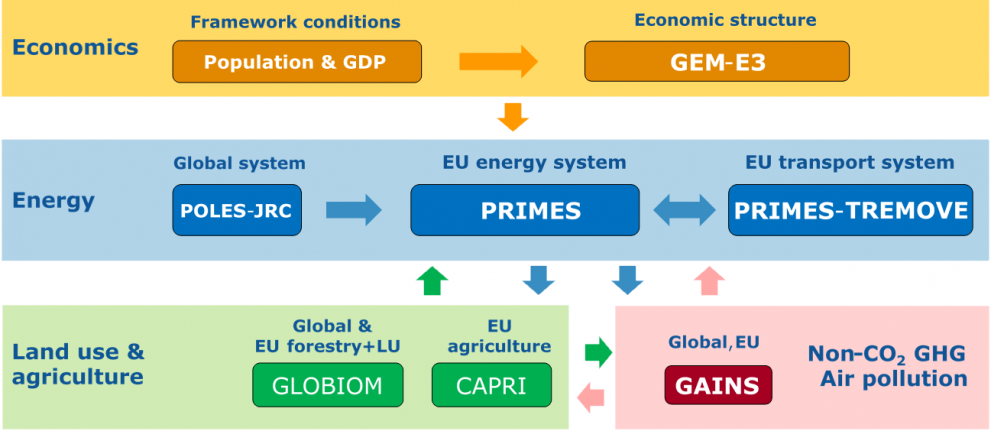The EU Reference Scenario is one of the European Commission's key analysis tools in the areas of energy, transport and climate action. It allows policy-makers to analyse the long-term economic, energy, climate and transport outlook based on the policy framework in place in 2020.
National experts from all EU countries contributed to the Reference Scenario 2020 through a consultation process, and stakeholders have also contributed on technology assumptions.
The EU Reference Scenario 2020 is the baseline scenario on which specific policy scenarios and variants used to assess options informing the policy initiatives in the European Green Deal package adopted by the European Commission in July 2021 have been developed.
Main outputs
The main outputs from the EU Reference Scenario 2020 are
- the EU Reference Scenario 2020 report
- main results on energy, transport and GHG emissions (Excel)
- results for non-CO2 emissions (Excel)
- results for LULUCF (Excel)
- results for air pollution (Excel)
- technology assumptions energy (Excel)
- technology assumptions transport (Excel)
Disclaimer
The European Commission does not guarantee the accuracy of the data included in these documents, developed by external contractors, nor does it accept responsibility for any use made thereof. Neither the Commission nor any person acting on the Commission’s behalf may be held responsible for the use which may be made of the information contained therein.
Visualising energy scenarios
Explore the EU Reference Scenario 2020 with this interactive tool developed by the European Commission Joint Research Centre (JRC), which allows to visualise the energy consumption in industry, buildings and in the transport sector.
The tool is suitable for both mobile and desktop use.
Disclaimer
Data are prepared by the (JRC) and may differ from other reporting due to differences in sectoral scope and energy product definition. Neither the Commission nor any person acting on the Commission’s behalf may be held responsible for the use which may be made of the information.
Modelling framework
The EU Reference Scenario 2020 is developed by a modelling consortium led by E3-Modelling, and including IIASA and EuroCARE.
The PRIMES and PRIMES-TREMOVE are the main models used for the EU Reference Scenario 2020, and they are the core elements of the modelling framework for energy, transport and CO2 emissions projections. In addition, the GAINS model is used for non-CO2 greenhouse gas emission projections, the GLOBIOM-G4M models for projections of LULUCF emissions and removals and the CAPRI model is used for agricultural activity projections, and the GEM-E3 model projects macroeconomic developments. The international energy context is provided by the POLES-JRC model.


